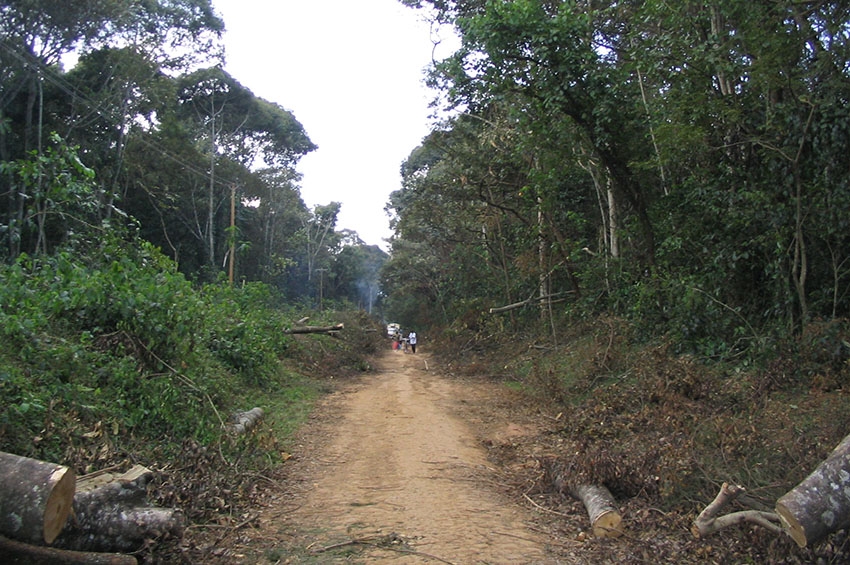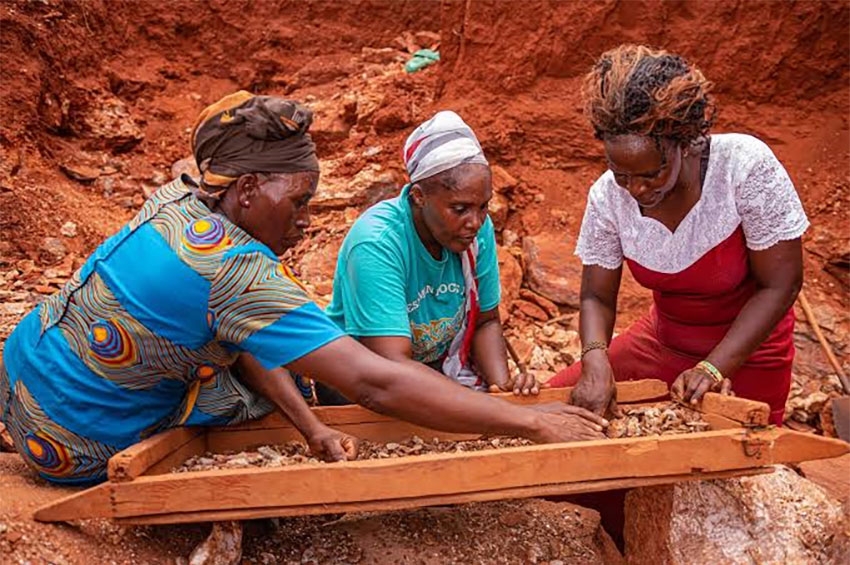The thirty eight year old man had his arms outstretched as he danced after scoring his second goal in a 1990 world match against Colombia. Roger Milla’s two goals pushed Cameroon into the next round. Four years later at the age of 42, Roger Milla again did his famous dance at the corner flag after scoring against Russia.
When Ombi sings, his voice is deep and booming, but when he talks, he is almost soft spoken. As he utters the unique consonants and vowels of his tribal language, he has a confident smile on his face. He may be illiterate but his intimate knowledge of the forest could easily earn him a PHD in forestry.
At that early hour before dawn when the sun is still asleep, Ombi walks stealthily from the enclosure of his village to the narrow footpath in the forest. He is on his way to a river that is just over four kilometres away.
Ombi’s steps are stealthy because he doesn’t want to awaken the chimpanzees. Some researchers claim that these chimps were the first carriers of the simian immunodeficiency virus, which metamorphosed into HIV after it was passed on to humans. But this is not the reason why Ombi fears the chimps. Rather it is their sheer size of one hundred kilos and occasional foul moods that he is afraid of. Although the gorillas are bigger, they are not as common as the chimps.
The river is still three kilometres away but Ombi can already hear its calming rustle. He hastens his steps, eager to splash those cool waters on his face. He regularly fishes in that river by immersing in the waters a non-toxic chemical that is produced from crushed plant material. After dissolving in water, it deprives fish of oxygen causing them to sprint to the surface into his waiting arms.
In front of him to the right, even before he sees it, he can smell the ayous tree, known in neighboring Nigeria as obeche. As a boy, he would stand a few feet from the tree and gaze up at it. It was so tall that he sometimes imagined it touching God’s beard. Once, he had hid behind it when a chimpanzee jumped in front of him as if it wanted to attack him. But as it turned out, it was a female chimp fleeing from a randy male chimp.
As soon as he turned the corner, he came face to face with not one, but several ayous trees, all towering over forty metres and standing still as if posing for photos. Ombi had no idea that wood from this tree was perfect for making guitars. Neither did he know that the tree, whose scientific name is Triplochiton scleroxylon was in the IUCN red list of threatened species. But he did know that traders from outside the forest loved to cut the tree a lot. This tree, together with the sapele and azobé trees produce most of the timber that Cameroon exports.
In the final stretch leading to the river, Ombi came across several clusters of the moibi tree. This particular tree had healed his injuries more times than he could remember! Its medicinal properties were well known to the Baka people whose herbal prowess was second to none. Ombi’s wife frequented this particular spot to harvest gimba and njansang spices for culinary uses at home and also for barter trade with women traders from nearby Bantu villages. Apart from providing food, medicine and shelter for the Baka people, the forest also gives them currency for trading. In this regard, it is their trusted bank.
More than half of the trees that Ombi has passed on his way to the river are about twenty times bigger than his five-feet height. He knows most of them intimately because he has been seeing them for the roughly two decades that he has been in this world. He has scaled them many times in search of birds and honey. Once, he fell down and injured his right knee, but luckily the bark of the very tree that he was scaling was medicine for such bloody injuries.
When they are on the move in the forest, the Baka construct houses that are not posh like Nairobi’s Runda estate or grandiose like those found in Nigeria’s Banana Island. Rather, they are simple, functional and surrounded by Congo Rainforest, the world’s second largest forest.
The forest spreads out across Cameroon, Central African Republic, the Democratic Republic of the Congo (DRC), Equatorial Guinea, Gabon, and the Republic of the Congo. Apart from the Baka, at least sixty million people depend on it for their livelihoods. Just like the Baka, 400 mammalian species, 280 reptile species, 900 butterfly species and 10,000 plant species call the forest home.
The forest houses of the Baka comprise sturdy sticks and broad leaves plucked from the hallowed forest and weaved expertly into temporary, yet dependable habitations that can keep away the crazy storms that embrace the forest from time to time. Baka women are the sole architects and contractors of the leafy houses.
The natural houses have no state-of-the art music systems blaring Angelique Kidjo’s timeless music or Diamond Platnumz’s tantalizing songs, but they do have musical chirps from the white-crested tiger heron bird together with a litany of other melodious birds.
The Baka don’t buy food from Le Bon Point supermarket in Cameroon or La Gastronomie supermarket in Chad. Rather, they pluck and scoop it from the forest – from herbs that give them fresh, organic vegetables; from the termite mounds that gift them with fresh proteins through winged termites; from the rivers that bless them with fresh fish; from the herbs that spice up their food and from the animals that roam the forest.
The lifestyle of the Baka is active as they are either walking to their next destination, racing after food, digging for more food, building those fresh houses, shimmying up those massive trees, dancing around ever present bonfires.. the list is endless. This lifestyle gives them natural cardiovascular exercises that state-of-the-art gyms charge fortunes to train fitness enthusiasts.
After briskly walking through the cool, wet forest for just over twenty minutes, Ombi finally makes it to the river and comes face to face with cold whistling waters. This river flows into Sanga River, which forms the part of the border between Cameroon and Central Africa Republic plus a portion of the border between Cameroon and the Democratic Republic of Congo. Sanga River then goes on to flow into the great Congo River, the world’s deepest river.
As Ombi splashes the small river’s water on his face, he is touching waters that will make it into Congo River in a few weeks time. Indeed, he is part of the vast Congo Forest Ecosystem that births and replenishes the Congo River and all other Congo forest basin ecosystems.
The Baka stand tall as the guardians of these ecosystems. It is time to empower them economically and amplify their voices. It is also time for you to visit the forest nearest you and discover why Ombi would never trade his forest home for the biggest mansion in the world.



















